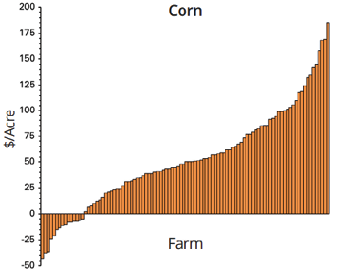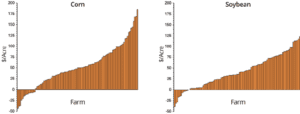
Improving soil health can help farmers build drought resilience, increase nutrient availability, suppress diseases, and reduce erosion and nutrient losses. Many soil health management systems also benefit the environment by storing soil carbon, reducing greenhouse gas emissions, and improving water quality. However, investing in soil health management systems is also a business decision and while almost everyone universally agrees that soil health is important but not everyone agrees that it is profitable. To answer this question, the Soil Health Institute (SHI) and Cargill conducted a major research project to provide farmers with the economics information they need when deciding whether to adopt soil health practices and systems. SHI interviewed farmers across 9 states who have adopted soil health systems to acquire production information for evaluating their economics based on partial budget analysis. In using this approach, the costs and benefits of a soil health system are compared before and after adoption of that system.
Project highlights
- The 100 farmers (nearly 2,000 acres average size) that were interviewed for this project used no-till on 85% (19 years avg. experience) and cover crops on 53% of those acres (9 years avg. experience).
- Across all 100 farms, soil health management systems increased net income for 85% of farmers growing corn ($51 per acre increase) and 88% growing soybean ($45 per acre increase).
- 67% percent of the farmers interviewed reported increased yield from using a soil health management system
- Cost of production was $24.00/acre less to grow corn and $16.57/acre less to grow soybean using a soil health management system.
- Farmers also reported additional benefits of their soil health management system, such as increased resilience to extreme weather, increased infiltration rates and increased trafficability of their fields after a rain.
- 54% reported increased soil organic matter levels by an average of 1.2% due to the soil health management system. Research has shown that higher soil organic matter increases a soil’s available nutrients and available water holding capacity, which is consistent with reduced fertilizer application, increased crop resilience, and improved field access observed by these farmers.


We are grateful to the Soil Health Institute and Cargil for conducting this study and showing that soil health practices are profitable in the short run for the producer as well as valuable in the long run for the land and the environment. The farmers interviewed for this project are clearly leading the way and therefore offer substantial opportunities for others to learn from their experiences in adopting soil health systems. With national adoption rates for no-till at 37% and cover crops at 5%, there is much to be learned, much to be gained, and much profit to be realized for those who are willing to adopt and properly manage soil health practices. We encourage you to read the full study at www.soilhealthinstitute.org/economics/
ARTICLE FROM THE SOIL HEALTH RESOURCE GUIDE VERSION 8
